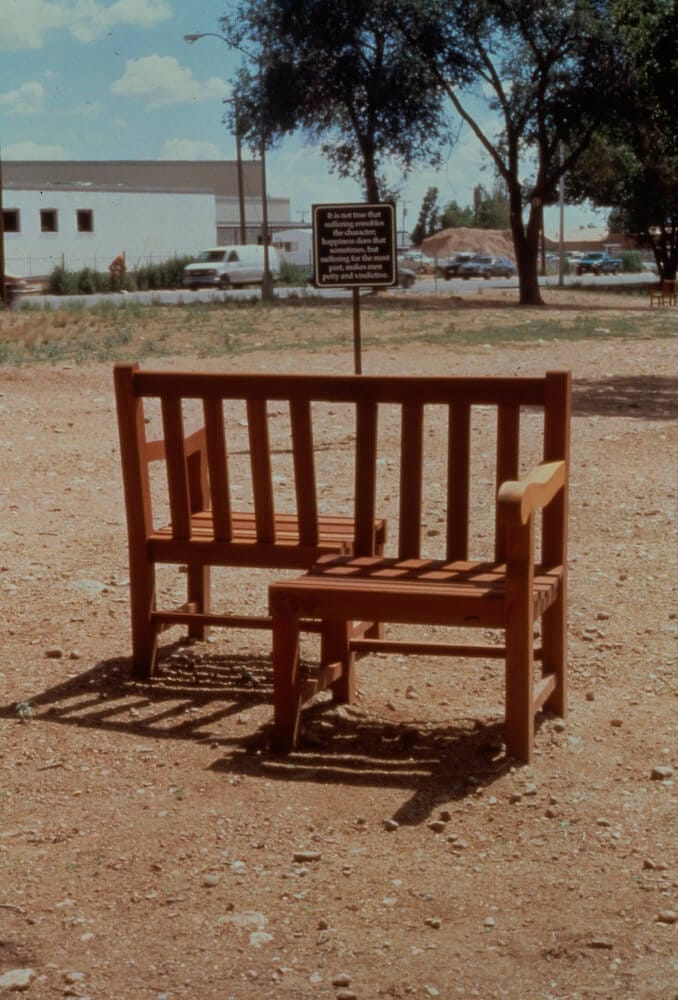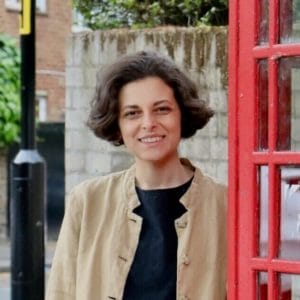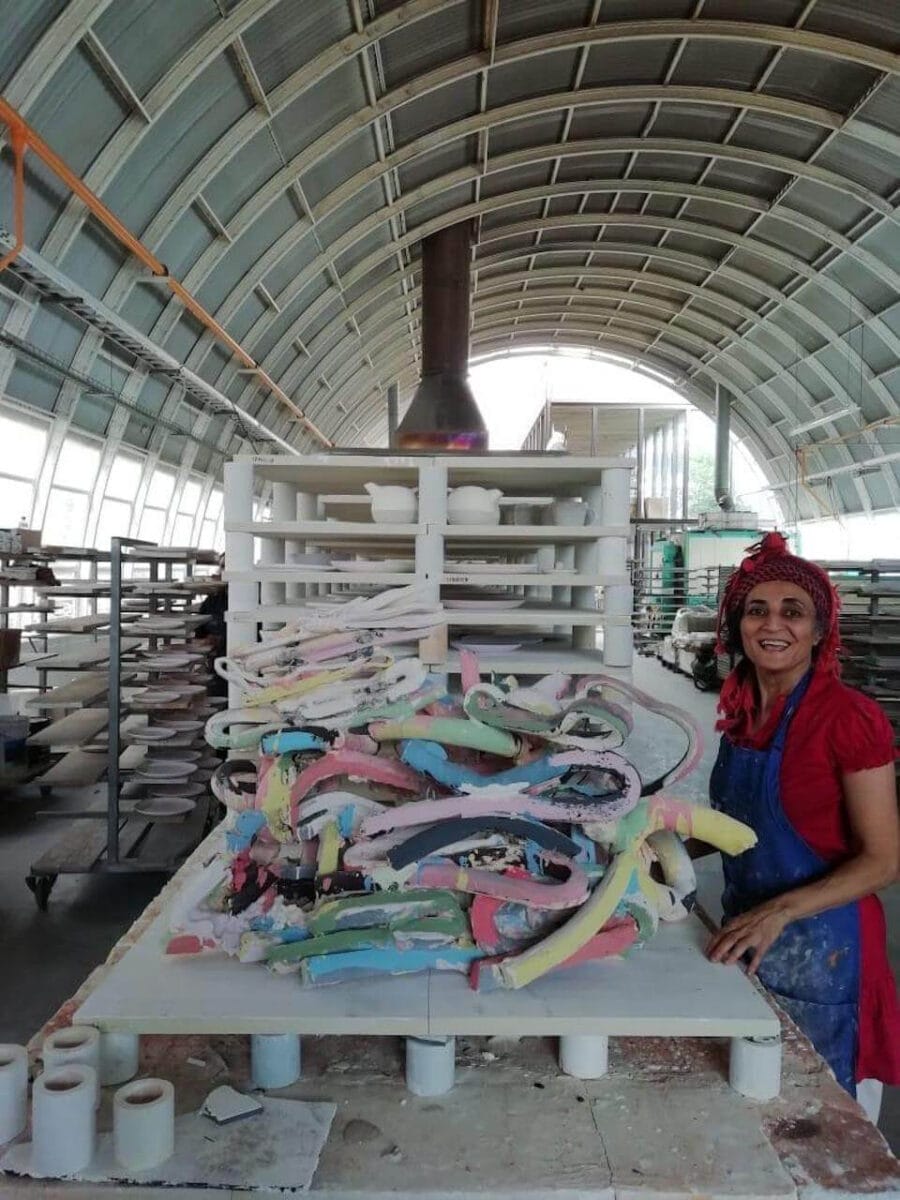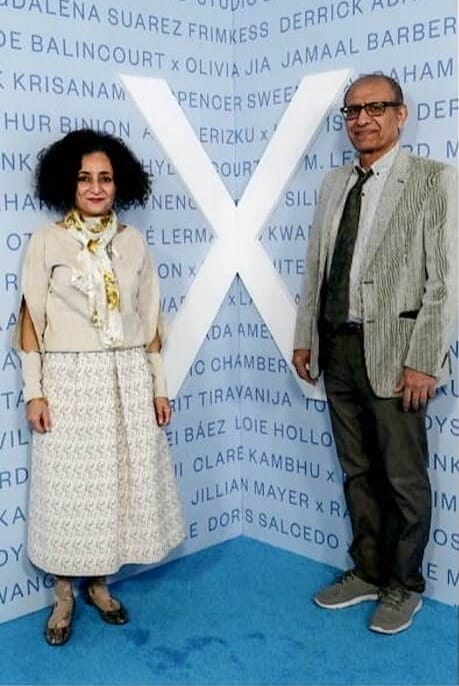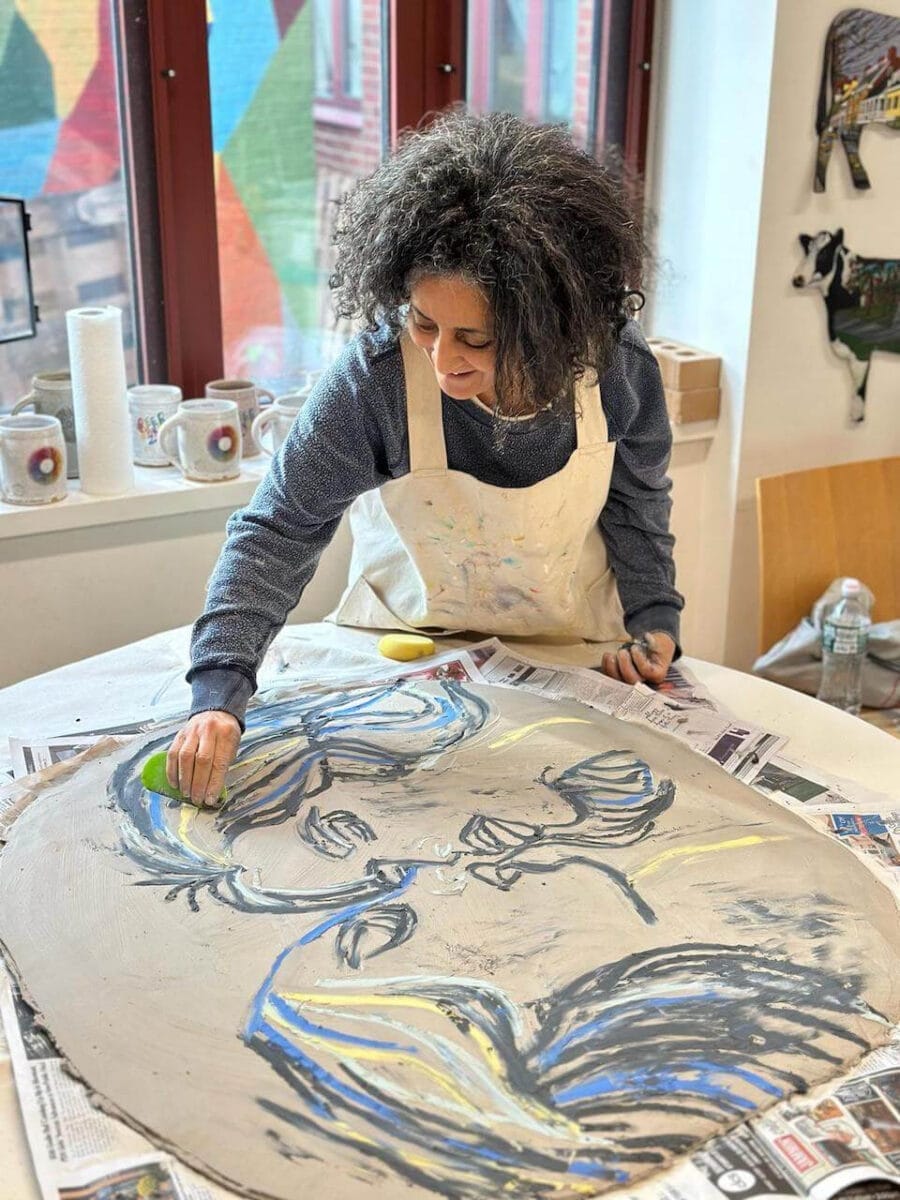Characters
- Participant A as Lover a
- Participant B as Lover b
The scene takes place in Santa Fe’s Love Park, in 1999. There is a wooden bench in the center of the stage with two signposts on each end of the bench.
Enter Lover a and Lover b holding hands.
Lover a : I am feeling tired. Let’s go find a bench.
Lover b : (Pointing to a wooden bench) Would that one do?
They each sit on one side of the bench.
Lover a : (Aside) She had always dreamed of a love in which her body and soul could grow old together, like two fingers of a hand. (Aloud) How interesting, don’t you think?
Lover b : (Aside) In love, only conquest and breaking-up are interesting; the rest is filler. (Aloud) I couldn’t agree more.
Lover a : I couldn’t be happier.
Lover b : Really?!
CURTAIN
Amer’s Love Park (1999, 2000) invites those walking in the garden to sit on a bench and read a citation painted on a stand in front of them. The benches retain much of the size and shape of benches found in French or North American parks. For instance, in the French rendition of Love Park (2000), the bench is as green as the one you would see in Paris’s Parc des Buttes-Chaumont. Amer used iconic benches, instantly recognizable and familiar. Visitors can easily associate these benches and their park setting with the topic of romantic love. The benches and the park are a reference to images of young and old lovers and couples sitting together, side by side, staring in the same direction.
Yet, Amer’s benches do not allow lovers to sit together and look in the same direction. These benches are split in the middle, with each half looking in the opposite direction. The separated lovers are each invited to read an unattributed citation about love. Sitting back-to-back, neither can see what the other is reading. While the setting would invite the lovers and participants to imagine or more specifically to expect that they are sharing the same experience, they are in fact reading different citations.
This splitting or breaking gesture in Amer’s Love Park is doubled with a theatrical quality. The lovers are unaware of the opposition between the citations. While each thinks the other is reading the same citation, they are in fact reading contradictory ones. This is akin to a situation often portrayed in literature and particularly in theatre, the quiproquo or the case of a mistaken identity or situation. It is essential to the intrigue of several plays where it results in a disagreement or a misunderstanding. The lovers who thought they were on the same page come to discover that in fact they were not. With the theatrical quality at play in Amer’s work, one can speak of the split bench as an essential element of décor, the posted citations as the lines spoken by characters and more importantly, Love Park itself as the setting or the stage space of the quiproquo. Amer’s broken bench becomes the driving force of the quiproquo. It materializes the broken communication; it is its visual representation.
Continuing with the theatrical analogy, Ghada Amer’s Love Park is supposed to be a play about love. Interestingly though, Amer uses the broken bench and the quiproquo to question the very definition of love as harmony and agreement. She pursues this by placing her stage, and setting of the Love Park “play,” within an actual (love) park. A close examination of the title of Amer’s garden helps us notice that Love Park is at once the name of the artistic piece, as well as being the stage on which a love story is set. The artist gives us a garden within a garden, a Park within a park. This nesting brings us back to yet another theatrical concept, the mise en abyme or a play within a play. The nested play repeats some elements of the outer play. Here, the topic of love is common to both parks in general and Amer’s Love Park. Yet, the inclusion of the quiproquo within Love Park equips the piece with something more. The quiproquo complicates the experience of love by introducing miscommunication exactly where one expected communication. In other words, Love Park, as the inner play, is used to highlight the ambiguity, interrupt or question the (love) park, the outer play. Nesting the stage within the park, love is confronted with and challenged by its very contradictions.

